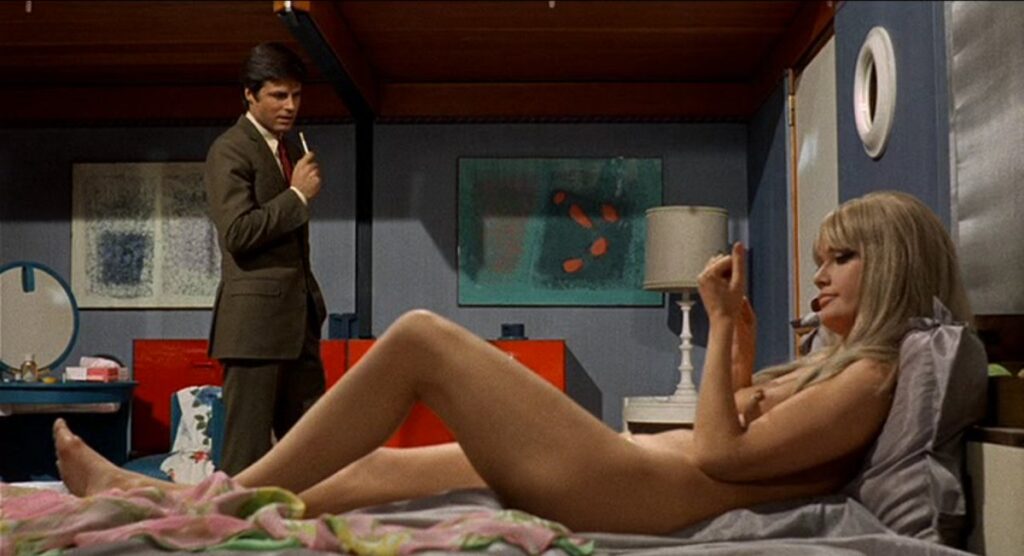
Lucio Fulci’s Una sull’altra (1969) is a giallo picture that works as a sort of remake of Alfred Hitchcock’s Vertigo (1958). In both films identity, on a conceptual level, is amorphous. However the motives and the nature of the deceptions in Una sull’altra have more in common with the pulpy novels of James M. Cain than with Hitchcock’s psychosexual fantasy. The departure between Una sull’altra and Vertigo occurs on a sexual level. In Fulci’s film sexuality and desire are replaced by themes of greed and revenge as the primary motivating factors in a game of cat and mouse.
Marisa Mell plays the Kim Novak inspired dual roles of Susan Dummerrier and Monica Weston. The “false” persona is again blonde while the “reality” is brunette. This equation where brunettes are the maternal, marrying-kind and blondes are the sirens of desire is essential to Hitchcock’s cinema and a key factor to Fulci’s picture. Fulci reverses the order of these appearances as they are staged in Vertigo (blonde then brunette). By giving the viewer the image of Marisa Mell as brunette housewife Susan Dummerrier first the focus of the film becomes her transformation into an object of desire.
What Fulci retains of this rather sexist economy is the spurning of the brunette type by the central protagonist. In Vertigo James Stewart, upon encountering Kim Novak’s “real” brunette persona, insists that she once again transform herself into a blonde, idealized version of femininity. In Una sull’altra the same thing happens. At the start of the film Fulci establishes that Jean Sorel’s character Dr. Dummerrier practically loathes his wife and prefers the company of his mistress played by Elsa Martinelli.
From the moment that Dr. Dummerrier finds his wife’s lookalike in the form of a stripper named Monica Weston Una sull’altra begins to diverge from Vertigo. Susan Dummerrier fakes her death, assumes the identity of Monica Weston until her husband is charged and executed for her murder so that then she and Dr. Dummerrier’s brother can collect the insurance of one million dollars. While a similar plot figures in Vertigo, Hitchcock is much more concerned with the idea of desire and its relationship to shaping identity. Una sull’altra looks at this plot much more practically in the tradition of Double Indemnity (1944) and The Killers (1946).
On a visual level, aside from the use of San Fransisco as a location, Una sull’altra couldn’t be more different from Vertigo. This film is pure Lucio Fulci complete with bizarre angels, startling modernist compositions and a rapid pace of montage. Fulci throws Una sull’altra at the viewer in a series of fits punctuated by longer, dialogue heavy scenes. Marisa Mell’s body is the the real subject of Una sull’altra visually speaking. Her form is the axis around which all of the other images in the film turn. In Fulci’s hands Mell becomes to Una sull’altra what Ava Gardner is to Siodmak’s The Killers; the ultimate femme fatale.
